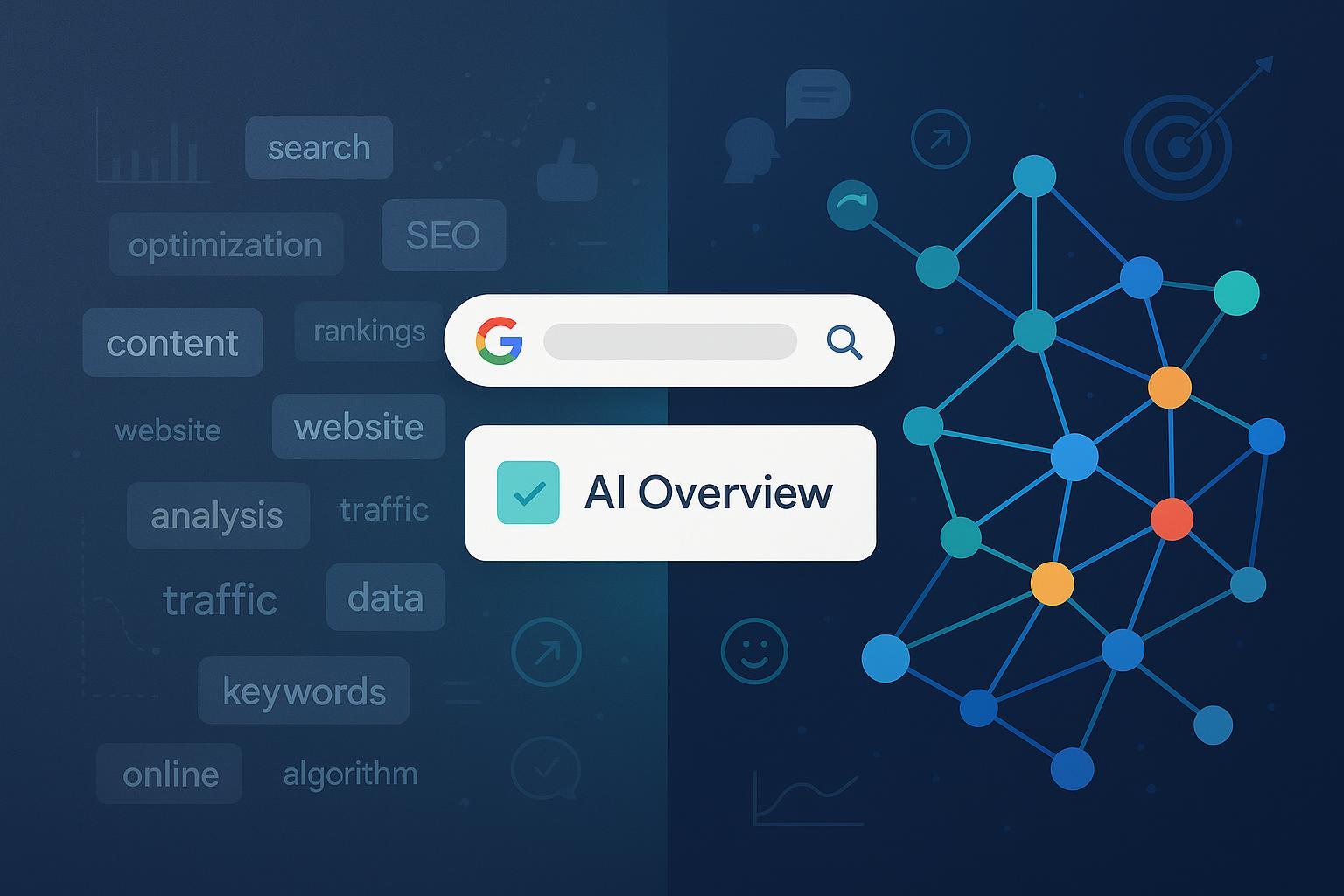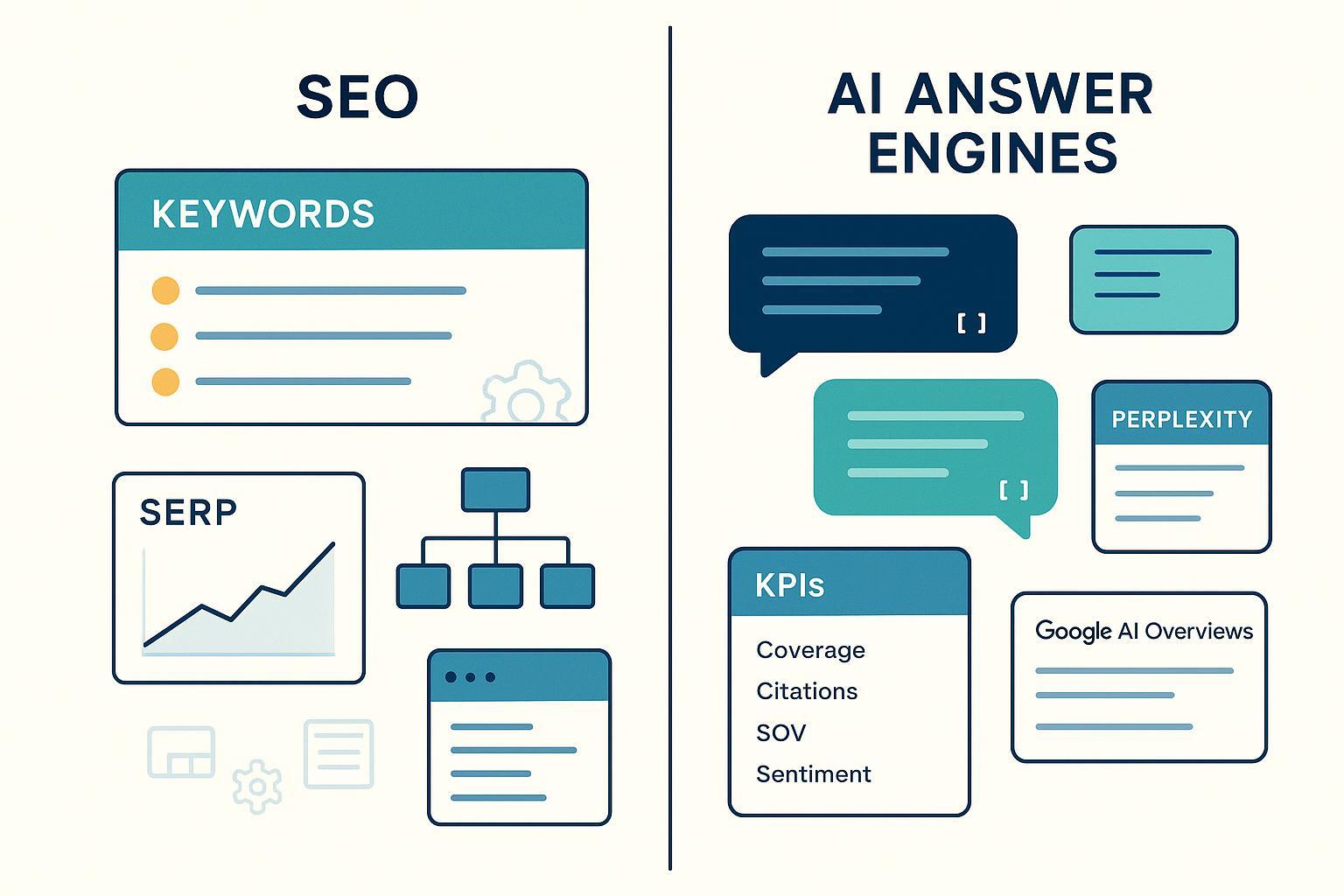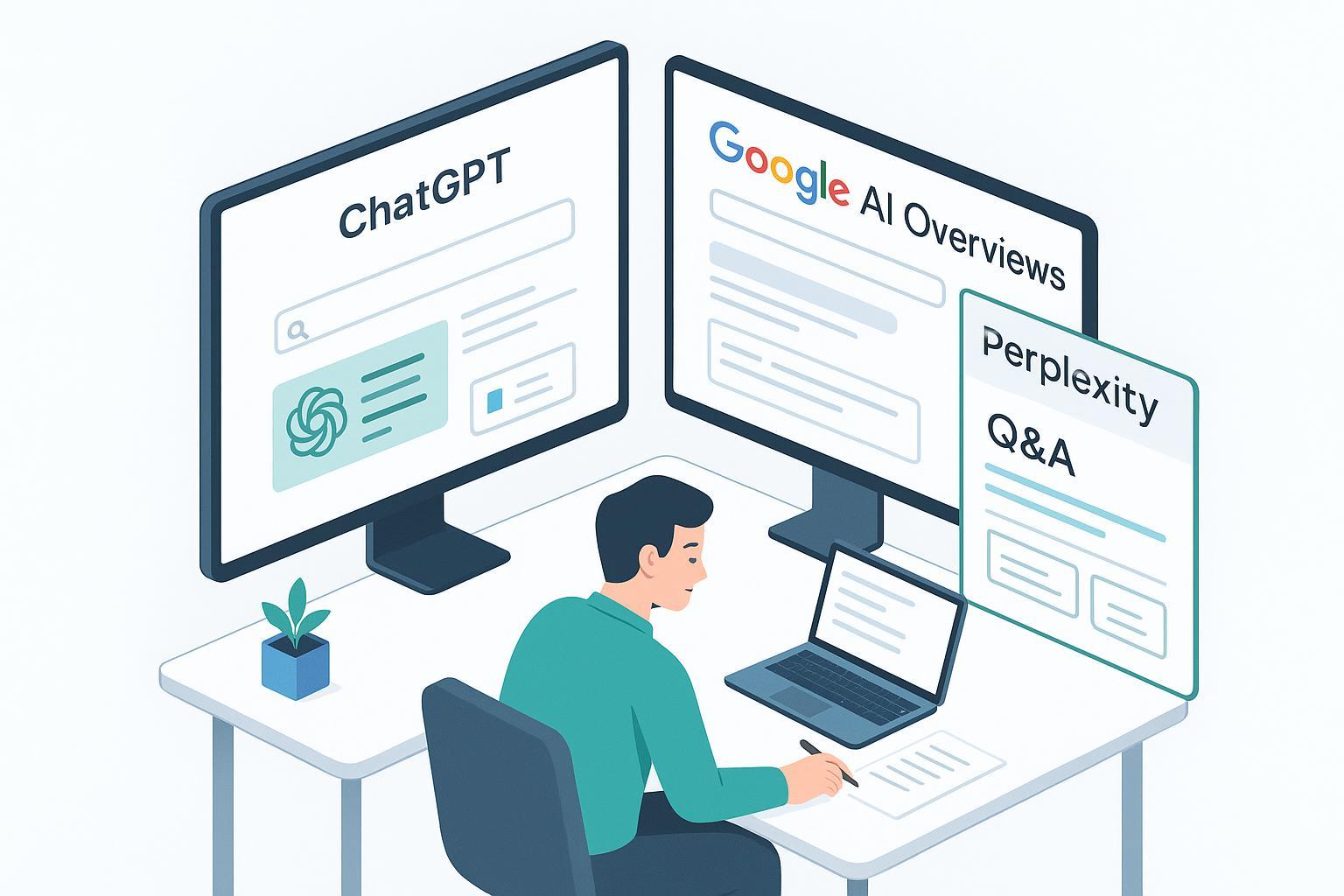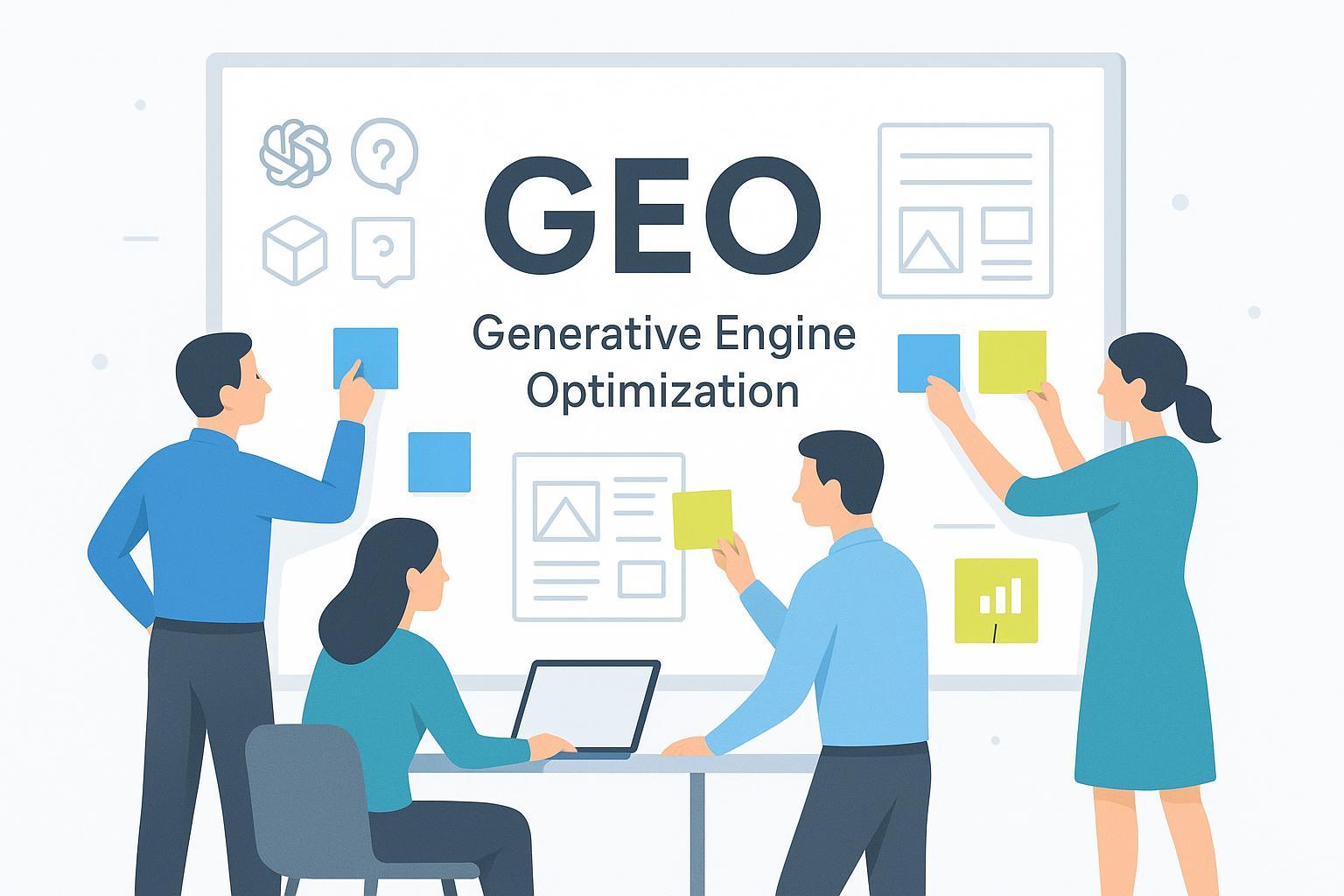SEO in 2025: Google MUM & AI Overviews Make Keywords Obsolete
Discover why keyword SEO is fading in 2025 as Google MUM and AI Overviews prioritize context, intent, and hurt CTR. Learn actionable strategies now!


Google’s search experience has decisively moved beyond simple keyword matching. With systems like MUM and new AI experiences such as AI Overviews and AI Mode, Search is designed to understand complex intent, synthesize context, and guide users with helpful links. Google confirmed broad U.S. availability of AI Overviews in May 2024 in its announcement, “Generative AI in Search: Let Google do the searching for you,” and emphasized that these experiences surface links to learn more (Google Blog, May 14, 2024). In 2025, Google introduced AI Mode and described how “query fan-out” breaks down questions into subtopics and issues many queries to reason more deeply, again with helpful links to the open web (Google Blog, May 20, 2025).
Why keyword-first breaks under MUM and AI Mode
Traditional SEO workflows—compile a keyword list, match pages to phrases, repeat—struggle when Search can parse intent, context, and relationships between entities.
- MUM’s multimodal, multilingual understanding helps Google connect concepts across formats and languages, prioritizing satisfaction of complex tasks over exact phrase matches.
- AI Mode’s “query fan-out” issues sub-queries behind the scenes, assembling an answer with links. This favors content that comprehensively covers a topic, demonstrates expertise, and maps cleanly to related entities rather than thin pages optimized for single keywords (Google Blog, May 20, 2025).
- Google’s Search Central documentation for AI features reiterates that these experiences appear when they add value and include helpful links, reinforcing the need for people-first, high-quality content that answers real questions (Search Central: AI features & your site, 2025).
What the data shows about clicks (and why your KPIs must evolve)
Publishers and brands are seeing measurable changes to traffic when AI Overviews appear. In April 2025, Search Engine Land reported that “Google AI Overviews are hurting click-through rates,” citing cohort data with notable declines for queries outside the top 3 rankings (Search Engine Land, Apr 2025). Digital Content Next analyzed publisher referral data in May 2025 and found average click reductions of 34.5% associated with AI Overviews appearances, with additional posts in August 2025 documenting median year-over-year declines across segments (DCN, May 6, 2025 and DCN, Aug 14, 2025).
Zooming out, zero-click behavior was already widespread before AI Overviews: SparkToro’s July 2024 study found that 58.5% of U.S. Google searches result in no clicks, with only 374 clicks per 1,000 searches reaching the open web (SparkToro, Jul 2024). Together, these findings suggest your measurement strategy must go beyond classic rankings and CTR.
From keywords to entities: a practical migration framework
Keywords are still useful discovery signals, but they’re insufficient as the organizing principle. Re-architect around entities, topics, and intent.
-
Map core entities and relationships
- Identify the people, products, organizations, places, and concepts your audience cares about.
- Build an entity graph: how do these elements relate, and which intents (informational, navigational, transactional) does each satisfy?
-
Build pillar → cluster structures
- Create comprehensive pillar pages addressing the core topic with user tasks in mind.
- Support with cluster articles that answer specific sub-questions, connect back to the pillar, and cross-link laterally where user journeys overlap.
-
Implement structured data thoughtfully
- Use FAQ, HowTo, Product, Organization, and Article schema where appropriate.
- Ensure internal linking reflects topical relationships, not just keyword variants.
-
Lead with originality and firsthand expertise
- Include unique data, experiments, and practitioner insights.
- Avoid “synthetic sameness”—thin rewrites of existing content are vulnerable to quality systems.
-
Refresh cadence and consolidation
- Quarterly topic audits to merge cannibalized pages, remove thin content, and maintain authoritative coverage.
Measure what matters in AI answers: KPIs and workflow
As AI Overviews and AI Mode reshape discovery, track visibility and sentiment in addition to rankings.
- Coverage: AIO trigger rate across target topics; where AI Overviews appear relative to Position 1 in results, since they can rank below the first result in a share of cases (documented by industry analyses across 2025).
- Inclusion: Whether your domain appears among AIO citations and how often.
- Overlap: How AIO citation sources overlap with top 10 organic listings; studies noted a modest decline in overlap after core updates.
- Click outcomes: CTR deltas when AIO appears vs. classic results; segment by informational vs. transactional intent.
- Sentiment & framing: How AI answers present your brand—tone, accuracy, and whether expert context is attributed.
A neutral, practical workflow example:
- Monitor target topics for AIO appearances and citation presence. Use an AI visibility tracker to log inclusion, link presence, and sentiment across platforms.
- When you first see recurring AIO citations for a topic, compare your coverage depth and originality to the cited sources, then expand entity relationships, add structured data, and consolidate duplicative pages.
- Track quarterly progress in AIO inclusion and sentiment scores alongside assisted conversions.
Introducing measurement tooling: Geneo can be used to monitor brand exposure and citations across Google AI Overviews, ChatGPT, and Perplexity, with sentiment analysis and historical query tracking. Disclosure: Geneo is our product.
For illustrative resources, review public query visibility analyses such as the GDPR fines 2025 largest cases and the luxury smart‑watch brands 2025 comparison to understand how citations and sentiment are presented across AI answers: GDPR fines 2025 largest cases and Luxury smart‑watch brands 2025.
Risk management: align with Google’s March 2024 policies
Google reinforced quality systems and introduced new spam policies in March 2024, calling out scaled content abuse, expired domain abuse, and site reputation abuse. The guidance is clear: producing many pages primarily to manipulate rankings—regardless of whether content is automated or human—is considered abusive (Search Central Blog, Mar 5, 2024). Audit your site for thin, duplicative, or parasitic content; consolidate where necessary and elevate firsthand expertise.
“Scaled content abuse is when many pages are generated for the primary purpose of manipulating Search rankings and not helping users… no matter whether content is produced through automation, human efforts, or some combination.” — Google Search Central, March 2024.
Myth vs reality: Are keywords dead?
- Myth: “Keywords don’t matter anymore.”
- Reality: Keywords still inform discovery and help structure on-page elements. What’s changed is that intent, context, and entity coherence now govern inclusion in AI responses and modern SERPs. Treat keywords as inputs to an entity/topic strategy—not the strategy itself.
Operating cadence for 2025
- Monthly: Review Google Search Central updates and annotate changes in your dashboards.
- Quarterly: Refresh entity maps and pillar/cluster coverage; expand original research and expert perspectives.
- Ongoing: Measure AIO trigger rates and citation presence; monitor sentiment and framing in AI answers.
If you need a consistent way to monitor AI-era visibility and sentiment while you migrate to entity-first architectures, you can incorporate Geneo into your stack to keep brand exposure and citations in view as you optimize.
Mini change‑log
- Updated on 2025-10-04: Added AI Mode and query fan-out references; incorporated 2025 CTR and publisher traffic analyses; clarified overlap behavior and risk controls aligned to March 2024 policies.





